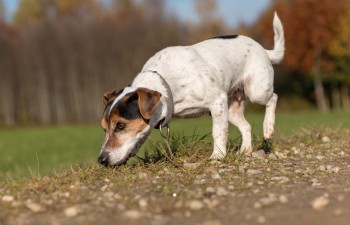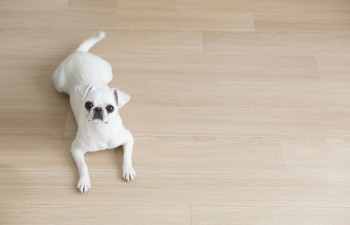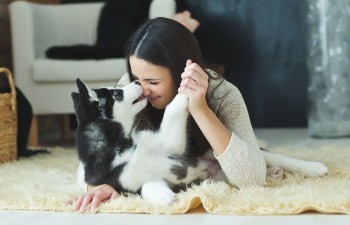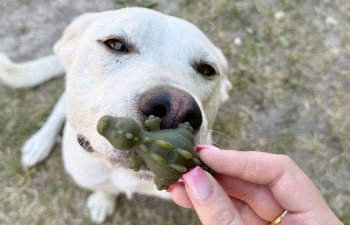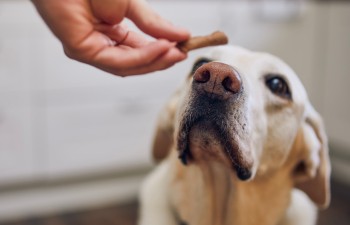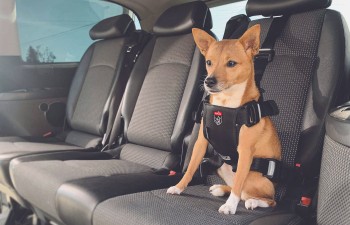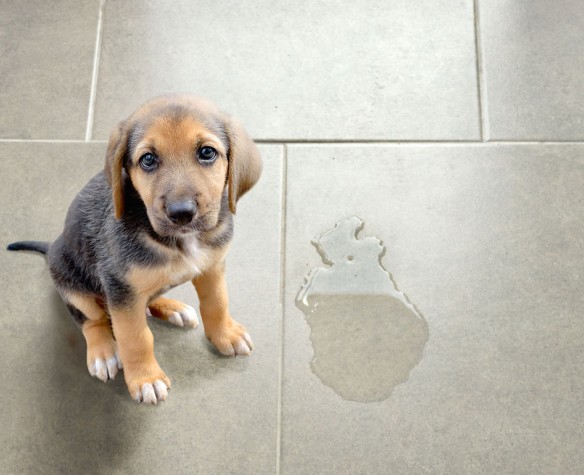
My dog is urinating everywhere
For both puppies and adult dogs entering their new home, house-training is the first aspect of training your dog properly. Here is a four-point method to avoid your dog doing his business in the middle of your sitting room.
1- Understanding your dog’s behaviour:
You first need to identify the reason why your dog is incontinent: this is either a medical or behavioural issue. In the first case, your pet will regularly pass small amounts of urine, when moving or when sleeping. Contact the only person who can help you, without hesitation: your vet.
In the second case, the dog is urinating in very specific areas. There may be several reasons for this natural but highly unpleasant behaviour: emotional response (joy, stress, etc.), marking territory (urine is an olfactory marker which keeps other dogs away) or simply a lack of training. Your dog can be house-trained at any age!
2- Choosing the right materials
Dogs learn best through play and reward. Always have a suitable toy ball with you, which you can throw for your dog each time he successfully performs an exercise.
Likewise, it is important to choose the right feeding accessories. Your dog’s bowl should not be full all day long. It is up to you to control his food. You should thus give your dog one or two meals a day, at a set time, and take his bowl away if it is not empty. Did you know: a dog is house-trained when fed according to simple but strict rules.
Do not hesitate to purchase a dry feed dispenser to help you.
However, make sure your dog always has access to water. Taking his water bowl away will not make him house-trained.
3- Preparing for training
Dogs need to have defined “zones”. These include the zone where he sleeps (his bed, blanket, etc), the zone where he eats and the zone where he does his business. These zones should be defined once and for all, and far away from each other. If your dog’s bed and bowls are in the same room, these should be kept on opposite sides of the room. It is often when these zones “overlap” that house-training becomes problematic.
Lastly, in the same way as training him to walk on a lead, you need to decide on a preparatory command and a command of execution (see “My dog pulls on his lead”).
For example: “Médor”, pause, “Go pee-pee”
4- Training
First of all: show him where the different zones are. Put your dog or puppy on a lead and take him on a guided tour, taking care to avoid the bedrooms. When you go past his sleeping area, (gently but firmly) make him lie down using 2 commands.
For example: “Médor”, pause, “Lie down”
Do the same for his bowls.
Remember to praise him when he obeys your commands.
Start this exercise 1.5 hrs after the end of his meal (even for puppies). Take him outside, show him exactly where you want him to do his business, and say both commands until he obeys. This should not take a long time.
Praise him immediately afterwards and throw the ball for him.
Lastly, take your dog to his sleeping zone, make him lie down, and stroke him as a reward. This is how your pet will completely separate his resting zone from where he does his business, and understand that he must not do his business indoors.
As with all training, you will need to repeat this exercise several times and be patient!
Overcoming common misconceptions:
When, to your horror, you discover a puddle in the middle of the room, it is counterproductive to get angry and rub your dog’s nose in his excrement. He knows that he was responsible for it. This will only make him more stressed and therefore make the situation worse next time he is alone. Make him do the exercise immediately… and then clean up his mistake!
Eric Tramson
https://www.erictramson.com/
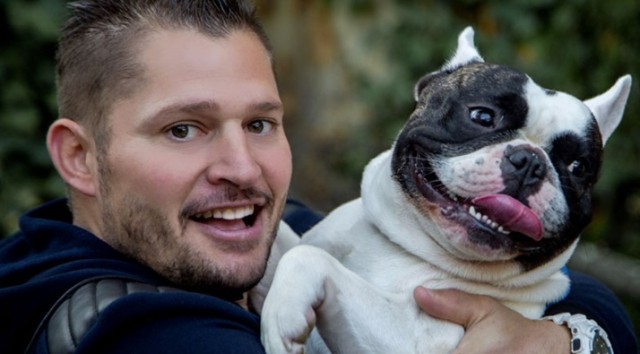
Eric Tramson, a state-registered dog trainer for more than 20 years, has successfully developed his own method based on training and positive reinforcement, to help you live in harmony with your dog and avoid minor day-to-day worries.

